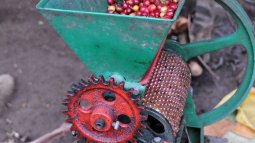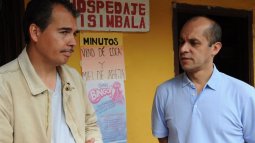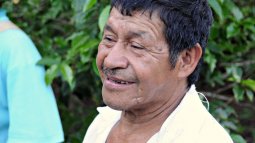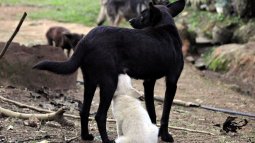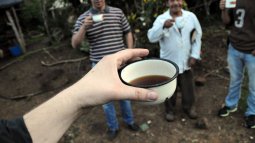We purchased this lot through Asociacion de Cabildos Juan Tama, an indigenous group of coffee producers which comprises eight different cabildos (tribes). The 1,400+ families' total land amounts to 2,000 hectares with a total of 400 farms, all of which are certified organic. About 25,000 people in the area depend on coffee production in one way or the other. The eight cabildos represented here are: Yaquiva, La Gaitana, San Andres, Santa Rosa, Calderas, Tumbichucue, Turbina, and San Jose del Pedregal.
In 1995, UNESCO declared the Tierradentro Reserve to be a World Heritage Site: a center of historical and cultural heritage, citing mainly the necropolis of pre-Hispanic Colombia or the Hippogeos of Tierradentro. It is also home to a group of 1,800 families of indigenous Colombians, organized into six resquerdos, or "reserves" and eight cabildos. The cabildos provide guidance, technical assistance, and quality control to the coffee-farming families who receive social benefits and a way to maintain independence. They have been producing coffee for generations, but have historically sold it in on the street, or to an independent collector. Recently, though, with some guidance and a their collective passion, they have been able to commercialize their coffee themselves—and it is very nice coffee.
The average farm in this region is about 3 acres, with traditional varieties of Typica and Caturra growing amongst a forest of plantains, avacados, mangoes, and guayaba fruits.The forest floor is a bed of mosses and what we could consider ornamental plants of pansies, violets, and thick ferns. There is ample water coming down out of the mountains, which producers use to ferment and wash their coffee. Most have a small hand depulper, and ferment overnight in a tub for something like 10–13 hours, depending on the ambient temperature and humidity. The producers use a hand test in the morning to determine if the sugars are off the beans, and then transfer them into the drier, a small parabolic drier with a bamboo floor and domed poly roof to keep the afternoon's rain off. Once dried, the coffee goes to the communal warehouse in town where it is cataloged and cupped.
Click here to see more pictures of Colombia and its coffee-growing regions.
—
Luis Arocha


